Silencing of the novel p53 target gene Snk/Plk2 leads to mitotic catastrophe in paclitaxel (taxol)-exposed cells
- PMID: 12897130
- PMCID: PMC166320
- DOI: 10.1128/MCB.23.16.5556-5571.2003
Silencing of the novel p53 target gene Snk/Plk2 leads to mitotic catastrophe in paclitaxel (taxol)-exposed cells
Abstract
Loss of p53 sensitizes to antimicrotubule agents in human tumor cells, but little is known about its role during mitosis. We have identified the Polo-like kinase family member serum inducible kinase (Snk/Plk2) as a novel p53 target gene. Snk/Plk2 mutagenesis demonstrated that its kinase activity is negatively regulated by its C terminus. Small interfering RNA (siRNA)-mediated Snk/Plk2 silencing in the presence of the mitotic poisons paclitaxel (Taxol) or nocodazole significantly increased apoptosis, similar to p53 mutations, which confer paclitaxel sensitivity. Furthermore, we have demonstrated that the apoptosis due to silencing of Snk/Plk2 in the face of spindle damage occurs in mitotic cells and not in cells that have progressed to a G(1)-like state without dividing. Since siRNA directed against Snk/Plk2 promoted death of paclitaxel-treated cells in mitosis, we envision a mitotic checkpoint wherein p53-dependent activation of Snk/Plk2 prevents mitotic catastrophe following spindle damage. Finally, these studies suggest that disruption of Snk/Plk2 may be of therapeutic value in sensitizing paclitaxel-resistant tumors.
Figures
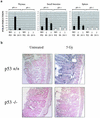
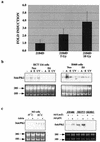


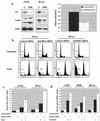
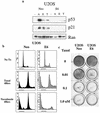
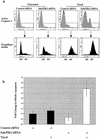
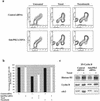
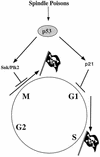
Similar articles
-
Mechanisms of cancer cell death induction by paclitaxel: an updated review.Apoptosis. 2022 Oct;27(9-10):647-667. doi: 10.1007/s10495-022-01750-z. Epub 2022 Jul 18. Apoptosis. 2022. PMID: 35849264 Review.
-
Pharmacological and small interference RNA-mediated inhibition of breast cancer-associated fatty acid synthase (oncogenic antigen-519) synergistically enhances Taxol (paclitaxel)-induced cytotoxicity.Int J Cancer. 2005 May 20;115(1):19-35. doi: 10.1002/ijc.20754. Int J Cancer. 2005. PMID: 15657900
-
Induction of survivin expression by taxol (paclitaxel) is an early event, which is independent of taxol-mediated G2/M arrest.J Biol Chem. 2004 Apr 9;279(15):15196-203. doi: 10.1074/jbc.M310947200. Epub 2004 Jan 13. J Biol Chem. 2004. PMID: 14722122
-
Survivin is required for stable checkpoint activation in taxol-treated HeLa cells.J Cell Sci. 2003 Jul 15;116(Pt 14):2987-98. doi: 10.1242/jcs.00612. Epub 2003 Jun 3. J Cell Sci. 2003. PMID: 12783991
-
Molecular effects of paclitaxel: myths and reality (a critical review).Int J Cancer. 1999 Oct 8;83(2):151-6. doi: 10.1002/(sici)1097-0215(19991008)83:2<151::aid-ijc1>3.0.co;2-5. Int J Cancer. 1999. PMID: 10471519 Review.
Cited by
-
Identification and characterization of the binding sequences and target genes of p53 lacking the 1st transactivation domain.Cancer Sci. 2020 Feb;111(2):451-466. doi: 10.1111/cas.14279. Epub 2020 Jan 13. Cancer Sci. 2020. PMID: 31834974 Free PMC article.
-
Serendipitous alkylation of a Plk1 ligand uncovers a new binding channel.Nat Chem Biol. 2011 Jul 17;7(9):595-601. doi: 10.1038/nchembio.614. Nat Chem Biol. 2011. PMID: 21765407 Free PMC article.
-
T-cell activation and early gene response in dogs.PLoS One. 2015 Mar 24;10(3):e0121169. doi: 10.1371/journal.pone.0121169. eCollection 2015. PLoS One. 2015. PMID: 25803042 Free PMC article.
-
Phosphorylation of p21 in G2/M promotes cyclin B-Cdc2 kinase activity.Mol Cell Biol. 2005 Apr;25(8):3364-87. doi: 10.1128/MCB.25.8.3364-3387.2005. Mol Cell Biol. 2005. PMID: 15798220 Free PMC article.
-
Mechanisms of cancer cell death induction by paclitaxel: an updated review.Apoptosis. 2022 Oct;27(9-10):647-667. doi: 10.1007/s10495-022-01750-z. Epub 2022 Jul 18. Apoptosis. 2022. PMID: 35849264 Review.
References
-
- Abrieu, A., T. Brassac, S. Galas, D. Fisher, J. C. Labbe, and M. Doree. 1998. The Polo-like kinase Plx1 is a component of the MPF amplification loop at the G2/M-phase transition of the cell cycle in Xenopus eggs. J. Cell Sci. 111:1751-1757. - PubMed
-
- Ankathil, R., N. Geetha, P. Remani, V. P. Gangadharan, G. R. Pillai, and M. K. Nair. 1996. Clinical implications of cytogenetic classification in adult acute lymphoblastic leukaemia patients. J. Cancer Res. Clin. Oncol. 122:370-373. - PubMed
-
- Belge, G., L. Roque, J. Soares, S. Bruckmann, B. Thode, E. Fonseca, A. Clode, S. Bartnitzke, S. Castedo, and J. Bullerdiek. 1998. Cytogenetic investigations of 340 thyroid hyperplasias and adenomas revealing correlations between cytogenetic findings and histology. Cancer Genet. Cytogenet. 101:42-48. - PubMed
-
- Burns, T. F., E. J. Bernhard, and W. S. El-Deiry. 2001. Tissue specific expression of p53 target genes suggests a key role for KILLER/DR5 in p53-dependent apoptosis in vivo. Oncogene 20:4601-4612. - PubMed
-
- Burns, T. F., and W. S. El-Deiry. Microarray analysis of p53 target gene expression patterns in the spleen and thymus in response to ionizing radiation. Cancer Biol. Ther., in press. - PubMed
Publication types
MeSH terms
Substances
Grants and funding
LinkOut - more resources
Full Text Sources
Other Literature Sources
Molecular Biology Databases
Research Materials
Miscellaneous
